- 한국어
- English
- 日本語
- 中文
- العربية
- Español
- Français
- Deutsch
- Pусский
- Tiếng Việt
- Indonesian
By Honorary Reporter Crystal Grant from US
Photos = Crystal Grant
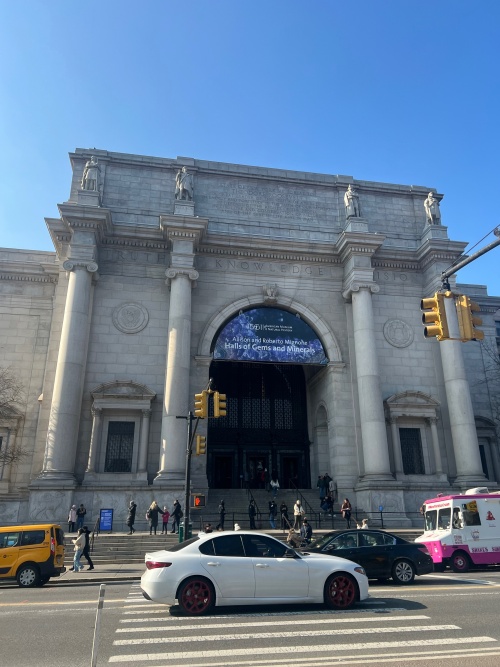
This is the entrance of the Museum of Natural History in New York.
Amid the hustle and bustle of modern life, it can be tempting to fantasize about living in the past, a simpler time. I normally watch historical K-dramas to experience this dream. Viewing beautiful women walk around a Hanok (traditional architecture) village wearing Hanbok (traditional costumes) makes me wish I could get whisked back in time to experience life in Korea long ago.
To satiate my desire to experience the Joseon Dynasty (1392–1910), I visited on March 10 the Museum of Natural History in New York to explore its Korean cultural section. The museum displays both exhibitions and permanent collections to visitors on earth science, human cultures and the universe at large.
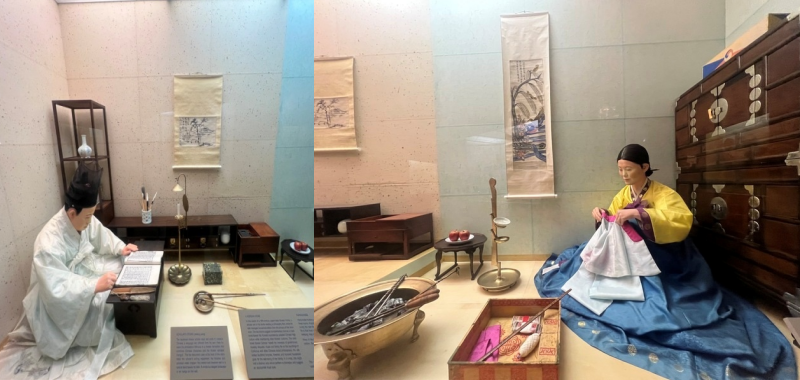
The scholar's studio (left) and inner room (right) are among the highlights of the Korean section at the Museum of Natural History.
The section showcases the scholar's studio and the inner room of a typical upper-class house from the 19th century. Part of the museum's permanent collection, this corner offered a great opportunity to learn more about Korean-style homes and the cultural value of everyday household items.
The woman wearing Hanbok is shown tending to household duties. She sews an ot-git, the white part of a Hanbok normally washed separately because it is made with materials like silk, which requires delicate care. The designs on her sewing box represent good fortune and wealth.
The tool inside the brass brazier is an indu, something Koreans heated up with charcoal in the brazier to iron clothes.
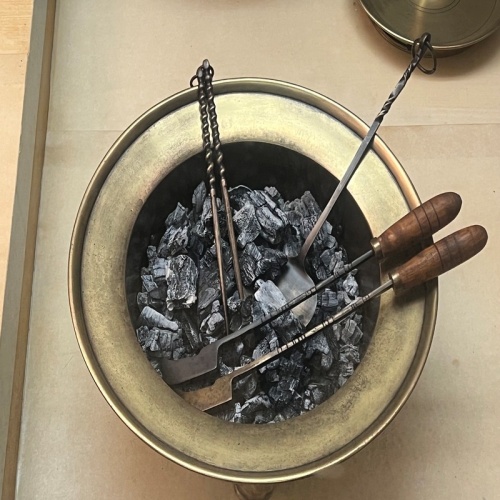
The indu
The exhibition also displayed a unique feature of 19th-century furniture in Korea. Because they were designed for use on the ground floor, tables and other objects were all so close to the ground.
For example, a soban is a small tray-like table for individual use. Koreans normally sat on the floor and ate food served on this table. And when a child turned 7, he or she received a personal soban. From age 8, the child would have his or her birthday meal served on the table.
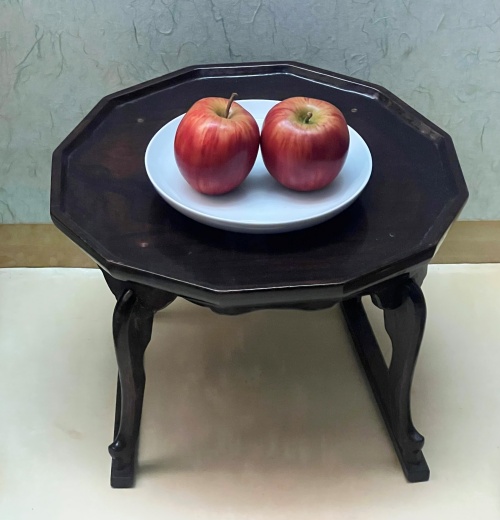
The soban is traditionally used for solo dining.
The scholar's room shows a scholar spending his leisure time reading texts and smoking his gombangdae (short tobacco pipe).
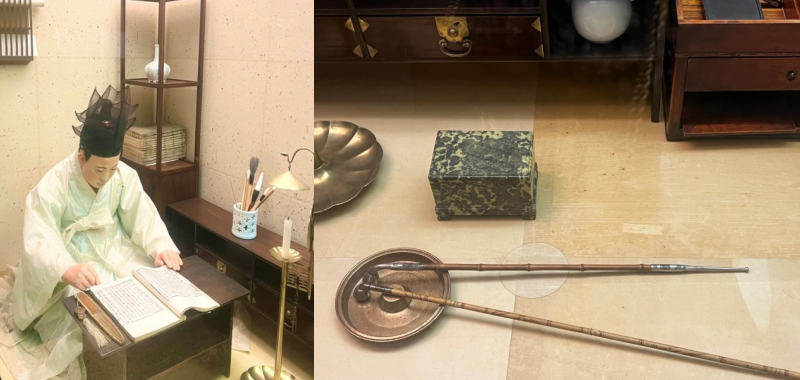
The scholar's room on the left and gombangdae (short tobacco pipe) on the right are among the highlights of the Korean section.
I was intrigued to learn more about the text the scholar was reading because having learned a bit of Hangeul, I couldn't recognize many of the characters. I was informed that many scholars during this period were also literate in Chinese script.
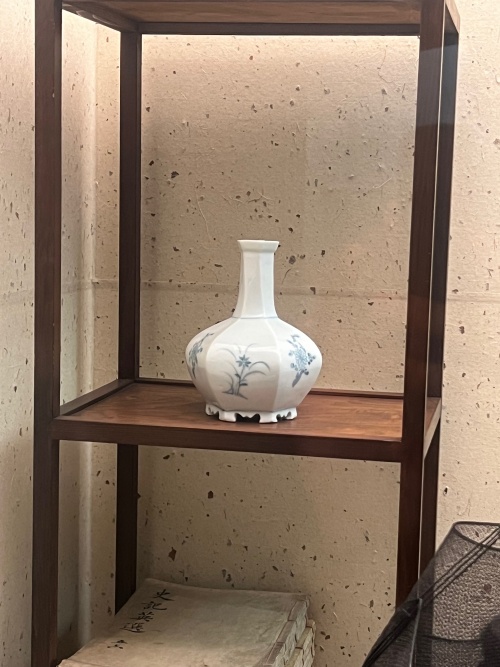
Baekja was a popular style of white porcelain during the Joseon era.
Behind the scholar was Joseon baekja (white porcelain), and I was extremely impressed by how a small display could provide so much information and insight into daily life in 19th-century Korea. While I do enjoy the pleasures of the modern world, exploring the museum definitely made me nostalgic for Korea's past.
msjeon22@korea.kr
*This article is written by a Korea.net Honorary Reporter. Our group of Honorary Reporters are from all around the world, and they share with Korea.net their love and passion for all things Korean.
